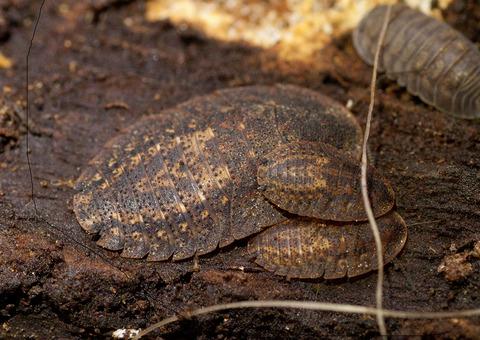当前位置:
X-MOL 学术
›
Ecol. Evol.
›
论文详情
Our official English website, www.x-mol.net, welcomes your feedback! (Note: you will need to create a separate account there.)
Rewilding with invertebrates and microbes to restore ecosystems: Present trends and future directions
Ecology and Evolution ( IF 2.6 ) Pub Date : 2021-05-02 , DOI: 10.1002/ece3.7597 Peter Contos 1 , Jennifer L Wood 1 , Nicholas P Murphy 1 , Heloise Gibb 1
中文翻译:

利用无脊椎动物和微生物恢复生态系统:当前趋势和未来方向
更新日期:2021-06-22
Ecology and Evolution ( IF 2.6 ) Pub Date : 2021-05-02 , DOI: 10.1002/ece3.7597 Peter Contos 1 , Jennifer L Wood 1 , Nicholas P Murphy 1 , Heloise Gibb 1
Affiliation

|
- Restoration ecology has historically focused on reconstructing communities of highly visible taxa while less visible taxa, such as invertebrates and microbes, are ignored. This is problematic as invertebrates and microbes make up the vast bulk of biodiversity and drive many key ecosystem processes, yet they are rarely actively reintroduced following restoration, potentially limiting ecosystem function and biodiversity in these areas.
- In this review, we discuss the current (limited) incorporation of invertebrates and microbes in restoration and rewilding projects. We argue that these groups should be actively rewilded during restoration to improve biodiversity, ecosystem function outcomes, and highlight how they can be used to greater effect in the future. For example, invertebrates and microbes are easily manipulated, meaning whole communities can potentially be rewilded through habitat transplants in a practice that we refer to as “whole-of-community” rewilding.
- We provide a framework for whole-of-community rewilding and describe empirical case studies as practical applications of this under-researched restoration tool that land managers can use to improve restoration outcomes.
- We hope this new perspective on whole-of-community restoration will promote applied research into restoration that incorporates all biota, irrespective of size, while also enabling a better understanding of fundamental ecological theory, such as colonization and competition trade-offs. This may be a necessary consideration as invertebrates that are important in providing ecosystem services are declining globally; targeting invertebrate communities during restoration may be crucial in stemming this decline.
中文翻译:

利用无脊椎动物和微生物恢复生态系统:当前趋势和未来方向
- 恢复生态学历来侧重于重建高度可见的类群群落,而忽略不可见的类群,例如无脊椎动物和微生物。这是有问题的,因为无脊椎动物和微生物构成了生物多样性的绝大部分并推动了许多关键的生态系统过程,但它们在恢复后很少被主动重新引入,这可能会限制这些地区的生态系统功能和生物多样性。
- 在这篇综述中,我们讨论了目前(有限的)无脊椎动物和微生物在恢复和野化项目中的结合。我们认为,这些群体应该在恢复过程中积极地重新野化,以改善生物多样性和生态系统功能成果,并强调如何在未来利用它们发挥更大的作用。例如,无脊椎动物和微生物很容易被操纵,这意味着整个社区有可能通过栖息地移植在我们称为“整个社区”重新野生化的实践中重新野生化。
- 我们为整个社区的野化提供了一个框架,并将经验案例研究描述为这种研究不足的恢复工具的实际应用,土地管理者可以使用它来改善恢复结果。
- 我们希望这种关于整体社区恢复的新视角将促进对包括所有生物群的恢复应用研究,无论大小,同时还能更好地理解基本生态理论,例如殖民和竞争权衡。这可能是一个必要的考虑因素,因为在提供生态系统服务方面很重要的无脊椎动物在全球范围内正在减少;在恢复期间以无脊椎动物群落为目标可能对阻止这种下降至关重要。



























 京公网安备 11010802027423号
京公网安备 11010802027423号